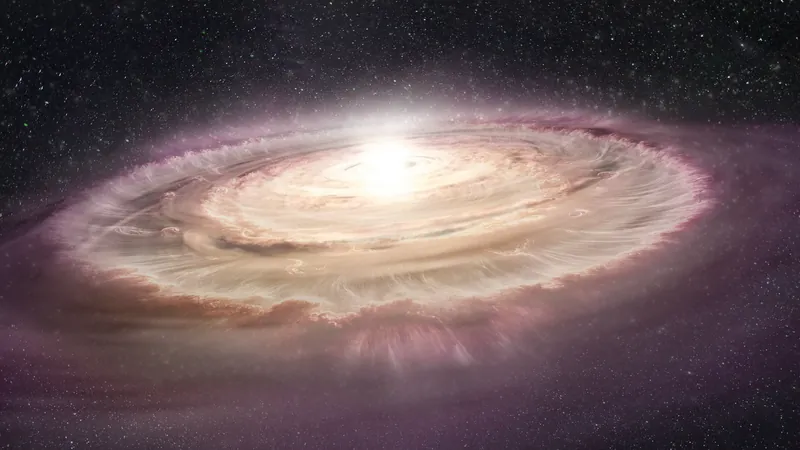
ALMA Discovers Surprising Planet Formation Under Intense Radiation – Here's What It Means for the Universe!
2024-11-18
Author: Emily
Introduction
Recent revelations from the Atacama Large Millimeter/submillimeter Array (ALMA) have rocked the astronomical community! New studies indicate that planets can indeed form in stellar environments once deemed inhospitable due to harsh radiation. This groundbreaking discovery opens up new frontiers in our understanding of planetary formation.
Key Findings
An international team of astronomers turned to ALMA to obtain high-resolution images of eight protoplanetary disks within the Sigma Orionis cluster. This particular region is bombarded by intense ultraviolet radiation from a massive nearby star. To the researchers' astonishment, they uncovered gaps and rings in most of the disks—phenomena typically linked with the formation of giant planets akin to Jupiter.
Surprising Discoveries
Lead author Jane Huang expressed her surprise: “We anticipated that the elevated radiation levels in this cluster would suppress planet formation in the outer regions of these disks. However, we observed compelling evidence indicating that planets could be forming at distances of tens of astronomical units from their stars, comparable to observations made in less extreme environments.”
Research Context
Leading up to this research, many scientists had primarily focused on protoplanetary disks positioned in areas with lower levels of ultraviolet radiation. This latest research marks ALMA's most detailed exploration of protoplanetary disks in a challenging environment, showcasing the robustness of planet formation processes. Huang stated, “These observations suggest that the mechanisms driving planet formation are resilient and may be active in a wider variety of environments across the galaxy than previously believed.”
Implications for Solar System Formation
The implications of these findings extend to understanding the formation of our own Solar System, which likely emerged in a similar high-radiation context. This discovery not only enhances our grasp of local conditions but also paves the way for future explorations of disks in even more extreme surroundings.
ALMA's Advanced Techniques
To achieve unprecedented detail in their disk images, the research team utilized ALMA’s most extended antenna configuration, enabling them to achieve a resolution of approximately 8 astronomical units. This exceptional clarity allowed for the identification of multiple distinct gaps and rings within several disks. While the precise nature of these disk structures remains a topic of debate, they are thought to either facilitate planet formation or result from interactions between nascent planets and surrounding disk material.
Conclusion
As we strive to build a comprehensive picture of planet formation across varying conditions, this study underscores ALMA’s capabilities in probing these phenomena throughout the galaxy. The exploration into the origins of Earth and the prevalence of exoplanets surrounding other stars is becoming clearer with every advancement in our understanding.
In a rapidly evolving field, these findings remind us that the universe is filled with surprises, encouraging astronomers to delve further into the cosmos. With ongoing and future studies planned, we are on the brink of uncovering even more secrets about how planets form, even in the most extreme circumstances! Stay tuned for more astonishing discoveries that could reshape our knowledge of the universe!









 Brasil (PT)
Brasil (PT)
 Canada (EN)
Canada (EN)
 Chile (ES)
Chile (ES)
 España (ES)
España (ES)
 France (FR)
France (FR)
 Hong Kong (EN)
Hong Kong (EN)
 Italia (IT)
Italia (IT)
 日本 (JA)
日本 (JA)
 Magyarország (HU)
Magyarország (HU)
 Norge (NO)
Norge (NO)
 Polska (PL)
Polska (PL)
 Schweiz (DE)
Schweiz (DE)
 Singapore (EN)
Singapore (EN)
 Sverige (SV)
Sverige (SV)
 Suomi (FI)
Suomi (FI)
 Türkiye (TR)
Türkiye (TR)